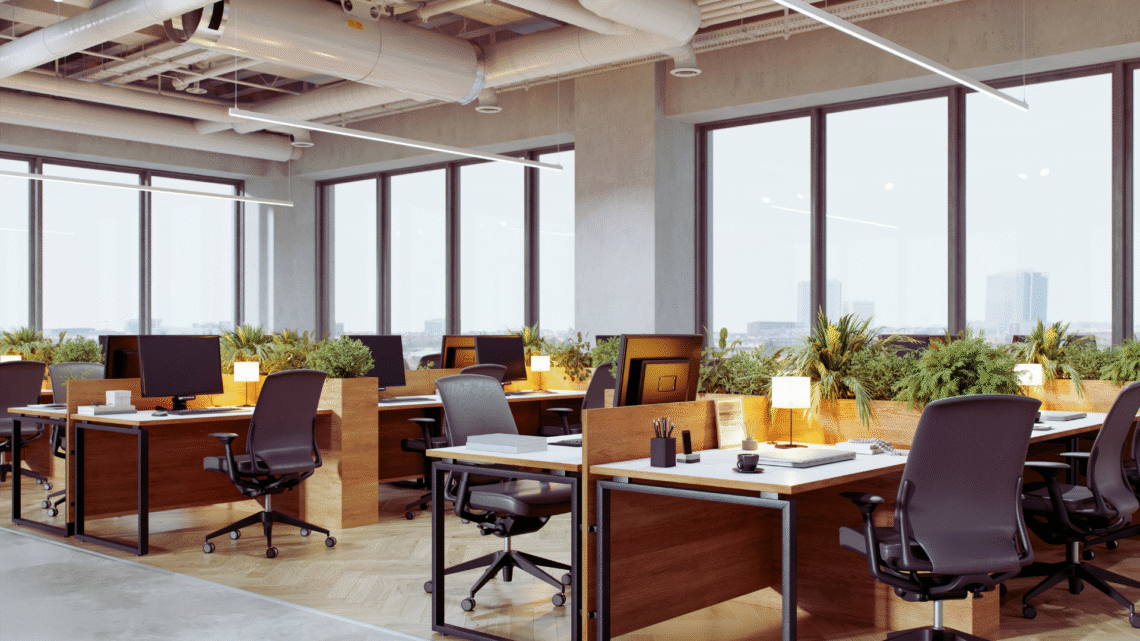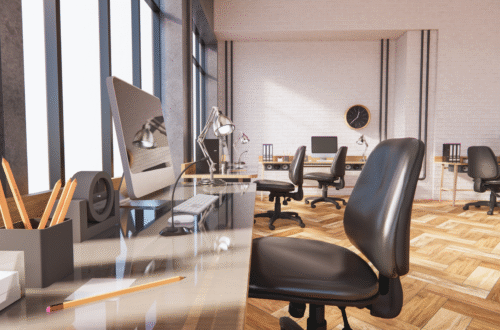
The Importance of Lighting in Your Office Design: Enhancing Productivity and Well-being
Lighting plays a crucial role in office design, influencing both productivity and employee well-being. Effective lighting strategies can enhance focus, reduce eye strain, and create a more inviting atmosphere. By understanding the impact of natural and artificial light, one can create a workspace that promotes efficiency and comfort.
Many professionals underestimate how the right lighting can transform their work environment. Poor lighting can lead to fatigue and decreased motivation, making it essential to choose fixtures and placements thoughtfully. Incorporating layers of light—ambient, task, and accent—ensures that employees have access to the right light levels throughout the day.
Moreover, the colour temperature of the lights can affect mood and energy levels. Warmer tones can create a cosy ambience, while cooler tones may encourage alertness. By prioritising lighting in office design, organisations can foster a productive atmosphere that benefits both employees and overall performance.
Understanding the Role of Lighting in Office Design
Effective lighting is crucial in office design as it significantly impacts both productivity and comfort. Proper illumination enhances ergonomics and creates a conducive work environment, making it essential to consider various lighting aspects carefully.
The Science Behind Illumination
Illumination plays a key role in creating visual comfort and supporting human health. The human eye requires adequate light to function efficiently; insufficient lighting can lead to eye strain and fatigue.
Natural light contributes positively to mood and energy levels, while artificial lighting must replicate similar qualities. Lumens measure brightness, and colour temperature, indicated in Kelvins, affects the warmth or coolness of light. A balanced mix of ambient, task, and accent lighting is ideal for a well-lit workspace.
Key Lighting Terminology
Understanding specific terminology helps in selecting appropriate lighting options.
- Lumens: A measure of total visible light emitted by a source.
- Lux: A measurement of light intensity at a specific location, relevant for workspace brightness.
- Colour Temperature: Expressed in Kelvins, it describes the appearance of light; warm lights (below 3000K) create a cosy atmosphere, while cool lights (above 5000K) enhance focus.
Familiarity with these terms assists in choosing fixtures that support both lighting design and ergonomic practices.
How Lighting Affects Productivity and Comfort
Lighting directly influences worker productivity and comfort levels. Bright, well-distributed light can reduce errors and increase focus, making effective lighting essential for high-performance tasks.
Conversely, poor lighting can result in headaches, reduced motivation, and decreased overall efficiency. Task lighting, which provides direct illumination for specific activities, helps in minimising shadows and glare.
Creating spaces with adjustable lighting further enhances comfort, allowing individuals to tailor their environment to their preferences. Optimal lighting is essential for a productive and enjoyable workplace.
Strategies for Effective Office Lighting Design
Creating an effective lighting design in an office setting requires a thoughtful blend of various lighting sources, careful placement, and strategies to minimise distractions like glare and flickering. Attention to these aspects can significantly enhance productivity and the overall work environment.
Balancing Natural and Artificial Lighting
Maximising natural light can reduce reliance on artificial lighting and promote a healthier workspace. Large windows and open layouts allow sunlight to penetrate deeper into the office. This not only enhances mood but can also lower energy costs. So, in order to integrate such daylight-optimizing features, building developers can view Surespan’s sliding hatches or similar offerings that can increase sunlight penetration while maintaining functional access.
To complement natural light, carefully select artificial lighting that mimics daylight. LED fixtures with adjustable colour temperatures can create a balance that maintains an inviting atmosphere while ensuring adequate illumination.
Incorporating light sensors can optimise energy consumption, dimming or brightening artificial lights according to the available natural light. This strategy increases comfort and promotes sustainability within the workspace.
Optimal Placement and Selection of Light Sources
Proper placement of light sources is essential to achieve an evenly lit office. Avoid placing lights directly above desks, as this can create harsh shadows or overly bright areas. Instead, utilise indirect lighting or wall-mounted fixtures to distribute light more evenly.
Choosing the right types of bulbs and fixtures is equally important. LED lights are often preferred due to their energy efficiency and longevity. Consider using a mix of direct and indirect lighting sources to create layers of illumination that enhance overall comfort.
Regularly assessing light levels can ensure that specific areas, such as meeting rooms and individual workstations, are adequately lit. This proactive approach can help address employees’ needs and improve productivity.
Integrating Task, Ambient, and Accent Lighting
Effective office lighting involves integrating different types of lighting: task, ambient, and accent. Task lighting, like desk lamps, provides focused illumination for specific activities. This is essential in areas where detailed work occurs, such as at computers.
Ambient lighting creates a general illumination throughout the space, ensuring that it is adequately lit without harsh contrasts. Overhead fixtures provide this base layer of light, making the office welcoming.
Accent lighting can highlight particular features, such as artwork or architectural elements. This not only adds visual interest but can also influence the overall atmosphere, making the office feel more inviting.
Preventing Glare and Flickering
Glare and flickering lamps can be significant distractions in an office environment. To prevent glare, consider using shades or diffusers on light fixtures to soften the light entering the space. Position screens away from direct light sources to reduce reflections and improve visibility.
Regular maintenance of lighting fixtures can prevent flickering, which can lead to discomfort and reduced productivity. Replacing outdated fixtures with modern options can also mitigate these issues.
Employees should have control over their workspace lighting when possible. Providing options for adjusting brightness or using desk lamps can help individuals tailor their environments to minimise glare and create a comfortable working experience.
Choosing the Right Lighting Solutions
Selecting the appropriate lighting solutions is essential for creating a productive office environment. Key factors include the type of lighting, its colour temperature, and the control mechanisms in place. Each aspect contributes to overall comfort and functionality in the workspace.
Benefits of LED Office Lighting
LED office lighting offers several advantages over traditional lighting options. Energy efficiency is a primary benefit, as LED lights consume up to 75% less energy, leading to significant cost savings on electricity bills.
Additionally, LED lights have a longer lifespan, often lasting over 25,000 hours. This reduces the frequency of replacements, which can be a hassle in office settings.
Enhanced flexibility is another notable feature. LED options are available in various shapes, including LED flat panel lights and LED recessed lighting, making them suitable for diverse office designs.
Moreover, an LED’s low heat emission contributes to improved thermal comfort in workspaces.
Understanding Colour Temperature and Light Colour
Colour temperature is measured in Kelvin (K) and influences the atmosphere of an office. Different colour temperatures affect mood and productivity.
Cool white light, typically around 4000K to 5000K, promotes alertness and concentration. This type is ideal for tasks requiring high focus.
Warm white light, ranging from 2700K to 3000K, creates a calming atmosphere, suitable for areas where relaxation is desired.
Consider incorporating back-lit panels to provide ambient lighting while achieving the desired colour temperature. Dimming options can also adjust light colour to enhance comfort throughout the day.
Importance of Lighting Controls
Effective lighting controls allow for customisable brightness and ambience in the office. They include options like dimmers, timers, and smart controls integrated with mobile devices.
Dimming can help adjust the intensity according to the time of day and the specific task at hand. This adaptability enhances user comfort and reduces eye strain.
Smart lighting solutions, capable of adjusting light based on natural daylight, can also contribute to energy savings. These controls encourage a dynamic lighting environment that adapts to the office’s needs.
Selecting Luminaires and Fixtures
Choosing the right luminaires and fixtures is crucial for efficiency and style. Desk lamps should provide focused light for individual workspaces, while general lighting fixtures, such as downlights and flat panel lights, should offer uniform illumination.
Consider ergonomic designs that minimise glare and optimise light distribution. High-quality luminaires will enhance the aesthetic appeal of the office while serving functional needs.
Prioritising the correct arrangement of lighting fixtures can help utilise space effectively, ensuring every area is well-lit. Overall, a strategic selection of lighting solutions impacts workplace productivity and employee satisfaction.
Efficiency, Health, and Environmental Considerations
Lighting plays a critical role in office design, impacting energy efficiency, employee health, and environmental sustainability. Proper lighting solutions can lead to significant cost savings and contribute positively to workplace well-being.
Maximising Energy Efficiency in Lighting
To enhance energy efficiency in office lighting, it is essential to select fixtures and controls that optimise lumen output while minimising excess consumption. Implementing LED lighting can significantly reduce energy usage compared to traditional fluorescent bulbs.
Designing with a combination of direct and indirect lighting helps to evenly distribute light throughout the space. Utilising daylight through windows and skylights not only enhances aesthetics but also decreases reliance on artificial lighting, thereby lowering overall energy costs.
Reducing Energy Consumption and Costs
Selecting the right type of lighting can lead to substantial reductions in energy consumption and costs. Smart lighting controls, such as motion sensors and timers, help ensure lights are only active when needed.
Additionally, selecting fixtures with high efficacy ratings maximises illuminance while using less wattage. Businesses can also improve energy efficiency by working with professionals like an electrician sanford nc (or elsewhere), who can upgrade lighting systems and optimize electrical wiring. Regular audits and maintenance of lighting systems assist in identifying opportunities for further energy savings, ensuring that systems operate at peak efficiency.
Health Impacts of Inadequate Lighting
Inadequate lighting can lead to various health problems among employees, including eye strain and headaches. Insufficient illuminance levels can contribute to decreased productivity and increased fatigue.
Natural lighting is essential, as exposure to daylight has been shown to improve mood and concentration. Adhering to established lighting standards helps create an environment that supports both visual comfort and overall health and wellness. Ways to enhance natural light include installing skylights or rooflights, using light tubes or reflective surfaces, optimizing window placement, and incorporating glass partitions or open layouts to allow daylight to reach deeper into spaces. To explore suitable solutions, it may be beneficial to view the skylight range or similar lighting options.
Sustainable Lighting Practices and Regular Maintenance
Adopting sustainable lighting practices is essential for environmental protection. This includes choosing environmentally friendly bulbs and fixtures that reduce hazardous waste and energy usage.
Regular maintenance of lighting systems ensures optimal performance, allowing for adjustments in alignment with changing needs. This practice not only prolongs the lifespan of fixtures but also supports ongoing energy efficiency in the workplace environment.





